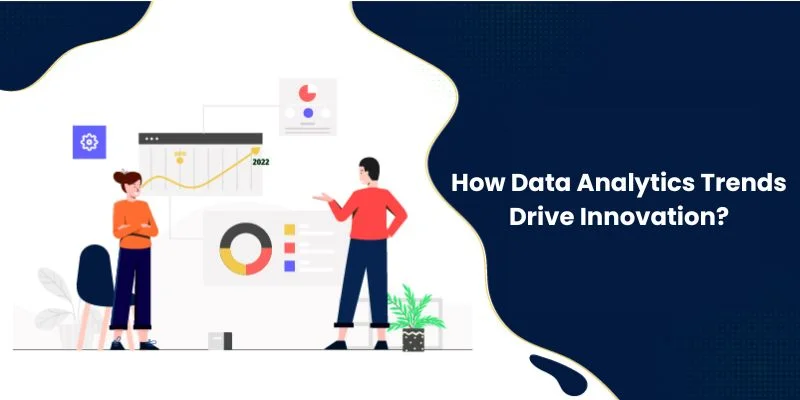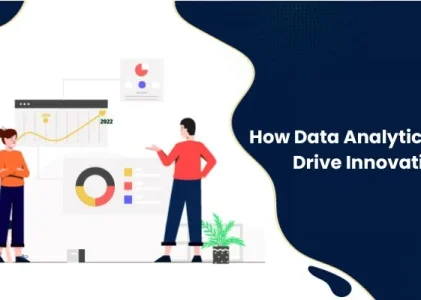Businesses are always looking for new methods to use data analytics to spur innovation and obtain a competitive advantage in today’s data-driven market. Data analytics, the process of analyzing and interpreting data to uncover actionable insights, has become a cornerstone of modern business strategies. By leveraging the latest data analytics and data science trends, businesses can unlock new opportunities, improve decision-making, and fuel innovation across various industries. We will delve into how the Recent trends in Data Science and Data Analytics drive Innovation in Business.
Data Analytics Innovation
Innovation is the engine of progress, driving businesses to develop new products, services, and processes that meet evolving customer needs and market demands. Data analytics fosters innovation by enabling businesses to uncover hidden patterns, identify emerging trends, and anticipate customer preferences. Businesses can use the analysis of vast volumes of organized and unstructured data to obtain important insights that guide their marketing strategies, operational improvements, and product development. Data analytics enables companies to innovate and stay ahead of the curve, whether it is through forecasting market trends, personalizing client experiences, or streamlining supply chain logistics. Pursuing an MBA in Business Analytics in Chennai guides individuals with the necessary skills to leverage data analytics for innovation, driving business growth and competitive advantage in today’s dynamic market environment.
This field constantly evolves, with new Data Analytics trends emerging to satisfy the growing demands of businesses and consumers. One of the key trends shaping the future of data analytics is the rise of artificial intelligence (AI) and machine learning (ML). AI-powered analytics algorithms can analyze vast datasets and identify complex patterns, enabling businesses to make more accurate predictions and informed decisions. Additionally, firms are now able to glean insightful information from text data, including social media conversations and consumer reviews, thanks to developments in sentiment analysis and natural language processing (NLP). Another prominent trend is the adoption of cloud-based analytics platforms, which offer scalability, flexibility, and cost-effectiveness for businesses of all sizes.
AI and Machine Learning Advancements
The discipline of data analytics is still undergoing change due to AI and ML. From predictive maintenance in manufacturing to personalized recommendations in e-commerce, AI and ML drive Data Analytics innovation across industries by enabling businesses to optimize processes, enhance decision-making, and deliver more tailored experiences to customers. Artificial Intelligence (AI)-powered analytics solutions are getting better at handling complicated datasets and producing useful insights as processing power and algorithm sophistication grow. Machine learning models can detect subtle patterns, correlations, and anomalies in data, enabling businesses to uncover hidden opportunities and mitigate risks more effectively.
Advanced-Data Visualization Techniques
Data visualization is one of the powerful Data Analytics trends for transforming complex data into actionable insights and compelling narratives. Recent trends in data analytics include adopting advanced data visualization techniques that go beyond traditional charts and graphs. Interactive dashboards, immersive virtual reality (VR) visualizations, and augmented reality (AR) overlays allow businesses to explore and interact with data in more intuitive and immersive ways. By enhancing data visualization capabilities, businesses can communicate insights more effectively, facilitate stakeholder collaboration, and drive faster decision-making. Furthermore, organizations are now able to craft engaging narratives that force audiences to take real action thanks to the development of data storytelling approaches and storytelling platforms. For professionals specializing in digital marketing through an MBA in Digital Marketing in Chennai, understanding and leveraging data visualization trends can enhance the effectiveness of marketing campaigns by presenting insights in visually compelling and engaging formats that resonate with target audiences.
Trends in Data Science
Statistics, computer science, and domain expertise are at the forefront of trends in Data Science that are driving innovation through data analytics. Latest trends of data science include integrating big data technologies such as Hadoop and Spark, which enable businesses to process and analyze massive datasets efficiently. Moreover, democratizing data science tools and platforms makes advanced analytics capabilities accessible to non-technical users, empowering business stakeholders to derive insights and drive decision-making. Additionally, the convergence of data science with other disciplines, such as IoT, blockchain, and augmented reality, is opening up new possibilities for innovation across industries, from healthcare to finance.
Data analytics trends help firms realize the full potential of their data assets, which spurs innovation across industries. From harnessing AI and machine learning for predictive analytics to leveraging cloud-based platforms for scalable data processing, businesses are leveraging the latest trends of data science to gain actionable insights, improve decision-making, and drive sustainable growth. Numerous leading MBA Colleges in Chennai offer education on Data Analytics and Data Science trends. By keeping up with new developments in data analytics technologies, companies may set themselves up for success in the quickly changing digital environment.
Comments
0 comments

